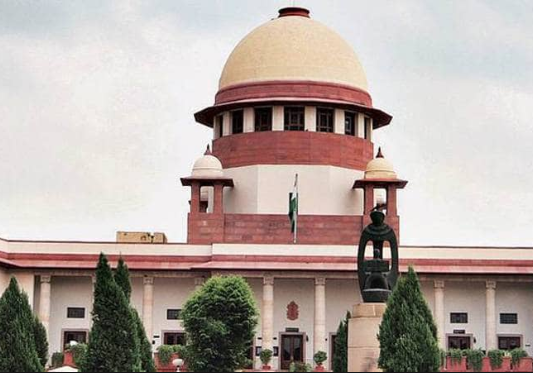SC gave setback to 21 opposition parties for demand of 50% VVPAT verification
New Delhi, May 7: A Voter Verifiable Paper Audit Trail, VVPAT is intended as an independent verification system for voting machines designed to allow voters to verify that their vote was cast correctly. The Supreme Court on Tuesday refused to review its order of April 8, raising the VVPAT physical verification from 1 to 5 EVMs in each assembly segment of a parliamentary constituency.

Three of the 21 petitioners - TDP leader & Andra Pradesh CM Chandrababu Naidu, National Conference leader & former J & K CM Farookh Abdullah and CPI leader D Raja- were present in the Court for the case, the proceedings of which got over in less than a minute. Dr A M Singhvi, counsel for the petitioners, had submitted that they were willing to settle for at least 33% verification.
The petition claimed that after the first phase of polling, in many cases, EVMs were found to be defective and faulty. “It has been reported that in some cases where voters would vote for one party, EVMs would record their vote having been cast for another party,” the review petition said.
"We had prayed for 50% (manual verification of the paper trail)... but the order is only to the extent of 2%...we would be happy with even 25 or 33%...", submitted Senior Advocate Abhishek Manu Singhvi on behalf of the petitioners being the leaders of 21 opposition parties.
As Dr. Singhvi emphasised on the importance of the verification in enhancing the confidence of the public in the electoral process, Senior Counsel Kapil Sibal also sought to advance that the respondents have misrepresented facts before the bench. However, the bench headed by Chief Justice Ranjan Gogoi was not inclined to modify the earlier order.
On April 8, the Court had partially allowed the original plea, by directing the Election Commission to increase random matching of VVPAT slips with EVMs to five polling booths from one per assembly segment in the ongoing general elections.
The Election Commission had cited logistical issues to oppose increasing the verification percentage and said that it could delay poll results. It is also helpful to detect possible election fraud or malfunction and to provide a means to audit the stored electronic results.